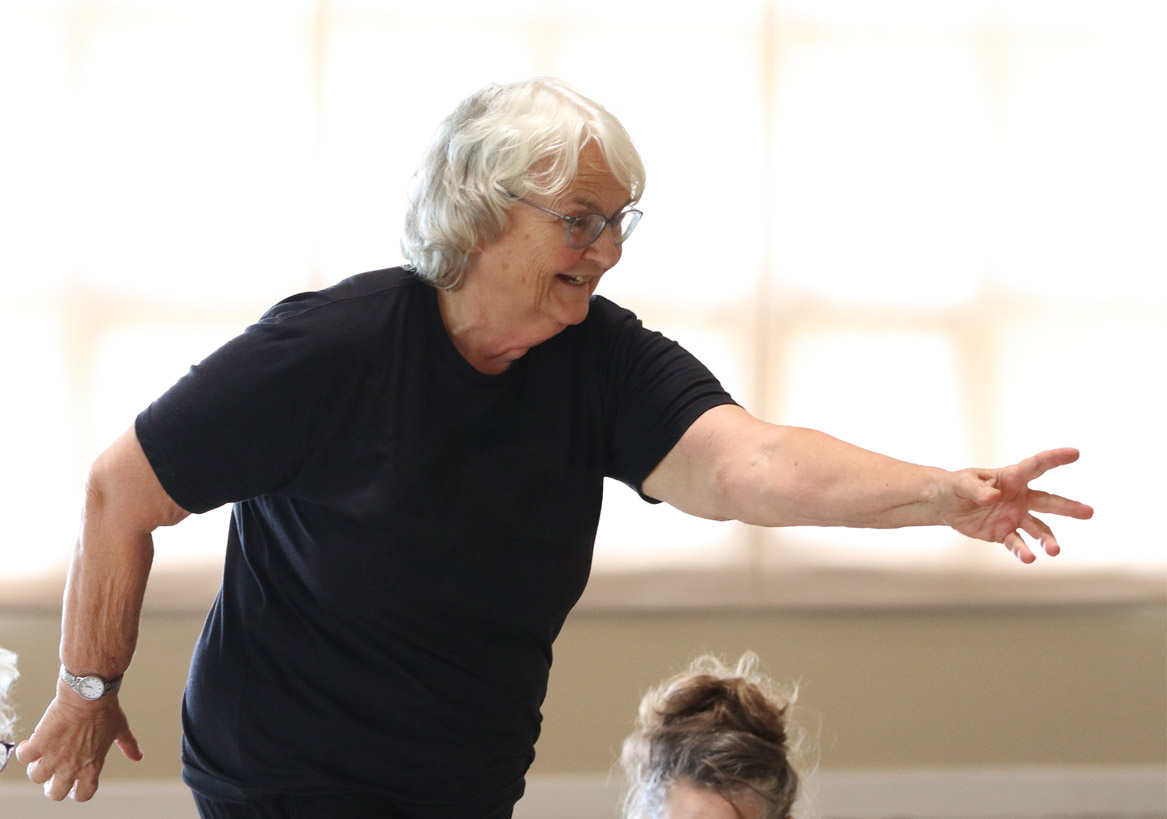
There is an inner impulse in all of us to express our needs and desires; we want to be seen and heard. The modality of Voice Movement Therapy facilitates transformation that enables us to liberate and reclaim our voice for speaking our truth and singing our soul.
“Lerne singen, o seele”
“Learn To Sing, Oh My Soul”
Friedrich Nietzsche
What is Voice Movement Therapy?
Voice Movement Therapy is the first in-depth Expressive Arts Therapy that focuses on developing an embodied voice as a way to explore the contours of the Self and more fully express the human experience. Founded by Paul Newham, VMT is a unique embodied psychotherapeutic approach to working with identity and personal story through movement, voice, breath, and image that does not rely on language or cultural constructs.
In any given moment of self-expression, our voice is communicating both our physical and psychological states. We are sharing our thoughts and how we feel about what we are saying. It’s not just what we say but how we say it; the tone and quality of our voice and the movements of our body convey the underlying emotional message. Voice Movement Therapy combines our vocal vibrations and body movements to explore and express emotions, and to go deeply into personal experience.
If it is change that we desire, talking about feelings isn’t always enough: we need to actively experience and express our emotions in order to transform restrictive habits. Freeing our voice and body and awakening our imagination can liberate us from contracted states.
Voice Movement Therapy is a compassionate and effective process that works deeply with what is present. It allows us to unpack the many layers of experience, gain rich insight, and clear pathways through the shadows. Voice Movement Therapy is a way to meet the silenced parts of ourselves and reclaim our authentic voice.
How is Voice Movement Therapy different?
A Different Approach To Therapy…
Voice Movement Therapy is unique in its therapeutic approach. Practitioners engage in verbal dialogue with clients, but emphasize the full expression of Self, working with and through the body, aiming to challenge and transform habitual vocal, movement, and behavioral patterns. Voice Movement Therapy draws from the acoustical analysis of otolaryngologist Dr Paul Moses; the characterological bodywork of Wilhelm Reich; and the psychological principles of C.G. Jung.
Come home to yourself
All registered Voice Movement Therapy practitioners are trained in noticing and responding to the vocal and physical cues presented consciously and unconsciously by the client. In a cyclical communicative exchange, the practitioner facilitates an embodied and envoiced investigation of the client’s story. By creatively engaging the imagination, Voice Movement Therapy weaves together the voice, body, and psyche in active personal exploration: the client is physically and vocally involved and engaged in the therapeutic process. Through the process of Voice Movement Therapy the client may feel emotionally and physically different; expanded rather than contracted. Old traumas and emotions can be experienced in new ways, given voice, and moved through.
“The breath anchors faithfully the inner quiver in the gut, the outer wobble in the voice and rises up in the song that embraces our whole present experience.”
Sebastiana Black
A Different Approach to Voicework…
Voice Movement Therapy emphasizes embodiment and provides a psychotherapeutic structure for deepening our awareness of how our psyche and personal narrative impact the acoustic qualities of our voice in both singing and speaking. Voice Movement Therapy is founded on the voicework of singing teacher Alfred Wolfsohn, and draws on the work of theatre practitioners Roy Hart, Jerzy Grotowski and Enrique Pardo.
Along with an understanding of the physical vocal apparatus, the breathing mechanism, and the process of sound production, Voice Movement Therapy practitioners make use of a unique pedagogical approach to vocal range expansion. VMT’s ten vocal components and three vocal tube configurations provide a specific technique and framework to broaden vocal range while maintaining healthy vocal function.
Importantly, Voice Movement Therapy offers a non-judgmental approach to voicework and does not conform to Westernized vocal categories (Bass, Baritone, Tenor, Alto, Mezzo-Soprano, Soprano) that may feel limiting to some vocalists. Instead, VMT encourages the widest exploration of human sound; there are no ‘wrong’ or ‘bad’ sounds, all sounds are equally valuable. Giving permission to freely explore all vocal potentialities allows the voice to expand and develop in not only more varied and rich tones but also in overall range. Working in this way to unchain the voice liberates the singer or speaker from ‘blocks’ and allows us to begin hearing ourselves anew.
“The way of growth is not comfortable; it is alive with aches and discomfort and often requires us to relinquish much that was known and the illusions of safety to which we would like to cling. It takes courage to meet ourselves anew, to voice ourselves and to discard that which no longer serves us.”
Christine Isherwood
How can Voice Movement Therapy help you?
We invite you to explore these various applications and to find out which of our practitioners work in the area most relevant to you. Voice Movement Therapy is a very flexible modality. If you feel your context is not covered below, please do not hesitate to contact us and we will connect you with the right practitioner.

